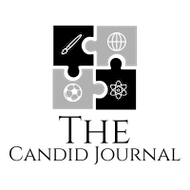My Weight-Loss Journey
A quick note before you read this post: by no means am I writing about my weight-loss journey to boast. What I am trying to establish is that if I can accomplish something, you can too. You can apply the decision-making skills that I learnt from my journey to accomplishing any goal that you want.
Coming into high school, I was 6 feet tall, weighing 170 pounds. I gradually developed unhealthy eating habits throughout high school. I relied on sugars to keep me awake for long nights of studying. My fast food intake dramatically increased. I replaced fruits and vegetables with chips and drinks. As I was gaining weight, I couldn’t do many of the things that I used to be able to do. For example, I couldn’t find many clothes in the size that I grew into and couldn’t fit in any of my old clothes. Things like this made me insecure about my weight and uncomfortable in my own skin. By the time quarantine started, I grew to 6’4 and 272 pounds.
I fretted over my seeming lack of control and inability to take consistent action towards slimming down. Even though I was completely aware of my weight gain throughout, I didn’t take any action. Every time I thought to myself that I should workout, I looked for excuses not to, such as having too much work or being too tired.
A few weeks into quarantine, I came across a TED Talk by Tim Urban called “Inside the Mind of a Master Procrastinator” (I urge you to take a look at it if you have time!). My main takeaway from the video is that there are two kinds of procrastination: procrastination with a deadline and procrastination without a deadline. The type of procrastination that us high schoolers typically encounter is the one with a deadline, whether it be an essay or school project. But I realized that I fell victim to procrastination without a deadline. Without a timeline, I only had a vague goal that I eventually wanted to lose weight, and as a result, I was missing a sense of intrinsic motivation. After thorough research about achieving a caloric deficit, calculating my basal metabolic rate, and more, I applied the rational decision-making process, which was explained in the video, to set a target to lose 30 pounds in two months.
The next evening, I pushed myself for a one hour workout on the treadmill. Despite my joints and muscles aching, my vision of being able to freely choose what clothes I want as well as feeling more confident in myself led me to push for another workout the next day. The workouts gradually became more manageable to finish and I developed a routine of running 6 miles a day while eating about 1500 calories per day. By the beginning of summer, I surpassed my goal and weighed 40 pounds lighter, which, in turn, pushed me to continue working out.
Now, 4 months later, I am 61 pounds lighter weighing at 211 pounds. I now know that by establishing a deadline and finding some motivation to push through a task, I can accomplish any goal. Whenever I see a problem, I will acknowledge the problem, break it into parts, and solve each problem one by one with set deadlines. I urge you to apply this process to any pending goals you may have, because trust me, it will be beneficial to you.


